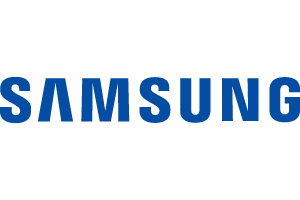Do You Know How Much Business You Have Behind You?
Submitted by Anonymous (not verified) on
Do You Know How Much Business You Have Behind You?
By Richard Libin, President, Automotive Profit Builders and author of “Who Stopped the Sale?” and “Who Knew?”
APB.cc, rlibin@apb.cc
It’s common knowledge. Every business leaves potential sales behind. These are opportunities that are never closed and that never make it to the bottom line. The examples are everywhere, like this one in the automotive industry.
A Toyota dealer in the northeastern United States captured information on 444 customers in a 30 day period. All of these potential customers came to the dealership and left without making a purchase. Through follow up they learned that some bought elsewhere, some opted not to purchase, and some are still in the market.
Assuming only 10% are still planning to purchase, that’s 44 potential sales. At APB we call this the business behind you, prospects that actually should be the highest priority in terms of closing. Salespeople should identify and proactively chase the business behind as aggressively as they chase new leads. In this example, it represents about one more sale for every day that this dealership is open.
Clearly, businesses today have business behind them that is being overlooked.
Unfortunately today, salespeople think that business must be transacted immediately – NOW. In reality, there is only one true definition of NOW. It’s when the customer is ready to buy, today, tomorrow or in a few months. Said another way, each and every customer who says, “Let me think about it, I’ll be back.” is a sale waiting to happen. Yet all too often this is exactly where salespeople STOP the sale.
Logically, following up, giving prospects a reason to come back, and working with them to close the deal using their definition of NOW seems straightforward. Yet most salespeople don’t know how to find that one more sale each month from business behind. So, they focus on finding new opportunities instead of looking at active leads, people who came in, but did not buy. Looking behind for customers who are still actively looking to buy, is not only a more successful approach than starting from scratch, but it’s more cost-effective.
If a buyer chooses to consider their purchase, it is imperative that the salesperson gain enough information before the buyer leaves to maintain contact, especially in the first 72 hours after the visit. Minimally, the salesperson should collect and record standard, detailed data, find the right product for the customer and present the best possible deal before he leaves. They must develop and execute a follow-up plan designed to bring the opportunity back to close the sale, as well as to extend sales opportunities and build the relationship.
Salespeople must take advantage of the technology in their stores and use CRM systems to develop an action plan based on the customers’ needs, wants, desires and other information gathered during their first visit. As new information becomes available that may help close a transaction, salespeople should contact the opportunities and bring them back. During the process, they must take care to build a personal relationship and not to rely solely on technology. After all, people buy from people they trust. Personal communication – a letter, thank you card, phone call and invitation to return – are much more effective than an email, text, or automated phone call. Personal contact gives salespeople the opportunity to interact, to show a real interest and leverage the relationship that was started in the first meeting.
Focusing on the business behind is also the first step in creating long-term clients. It can be a simple process if businesses and their sales teams adopt these basic practices:
Collect and record standardized, detailed data for every opportunity.
Present all the reasons why the opportunity should buy from the business.
Leverage technology to your advantage to develop a personal follow-up action plan designed to bring the opportunity back and close the sale.
Focus on relationship building with existing customers with a goal of converting them to clients and generating additional revenue and referral sales.
Always leave the door open and give the customer a reason to return. Don’t “slam” the door.
If businesses can’t handle the traffic standing in front of them, why spend money to develop new business. If the expectation is a high volume of traffic generated by expensive advertising is needed because of a continuously low close ratio, something is wrong. These businesses are stopping the sale. They have more business behind them than in front of them. Conversely, when businesses focus on following up, closing sales with existing buyers, they have the opportunity to increase sales significantly and building clientele who most likely will return and buy again and again.
Richard F. Libin has written two acclaimed books that help people of all walks of life improve their sales skills, because as he says, “everyone is a selling something. His most recent book, “Who Knew?” (www.who-knew.com), was published in January 2017, and his first book, “Who Stopped the Sale?” (www.whostoppedthesale.com), is now in its second edition. As president of APB-Automotive Profit Builders, Inc., a firm with more than 48 years experience working with both sales and service professionals, he helps his clientele, through personnel development and technology, to build customer satisfaction and maximize gross profits in their businesses. Mr. Libin can be reached at rlibin@apb.cc or 508-626-9200 or www.apb.cc.






